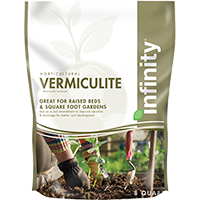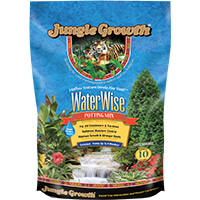A raised bed garden is a garden built on top of your native soil, sometimes incorporating native soil, sometimes not. Raised bed gardens can be contained, such as when you build a wood or stone structure to keep the bed intact, or they can be more free form, with soil and amendments merely piled several inches high. You can plant anything from herbs and vegetables to perennials and shrubs in a raised bed.
Raised bed gardening is becoming increasingly popular, especially for gardeners who have to battle against poor native soil conditions. Built on top of your native soil, you have control of the soil texture and ingredients.
Raised bed gardens are easy to build, plant, and maintain, offering many advantages. They warm more quickly in spring, allowing for earlier planting. Since raised garden beds are elevated above native soils often contained by a wood or stone structure, they help protect your plants from damage caused by wind, weed growth, and pests. The soil in raised beds can be easily tailored to the plants you decide to grow by adding amendments and organic material. Take a look at this innovative kit – it is strong and less expensive than other versions.
A Raised Bed Garden Mix Consisting of:
Other Products You Need:
- Plants or Seeds
- Mulch
- Plant Food
Constructing Your Own Raised-Bed:
- Wood
- Rake or Shovel
- Measuring Tape
- Hammer, Nail Gun, or Screw Driver
- Nails or Screws
- Level
What To Do:.
Fill Your Garden. The whole point of a raised bed garden is that it gives you the opportunity to garden in perfect soil. Take this opportunity to fill your bed with a good mixture of quality topsoil, compost, and rotted manure. Once they're filled and raked level, you're ready to plant or sow seeds.
- Select rot-resistant wood such as cedar or one of the composite lumbers. You want something durable that will last for several planting seasons. Two by six lumber is the perfect size as it is easy to work with and will provide six inches of soil depth. Many vegetables will grow very well in a garden bed that is six inches deep, however ten to twelve inch soil depth is ideal.
- Determining the size of your raised garden bed is important. It is a good idea to keep the width to 4 feet or less so you can access the middle of the bed from either side. Cut the lumber to the desired size and attach them by making a simple butt joint at each corner. Pre-drill and then screw each of the corners together with galvanized screws or attach with hammer and nails.
- Using a level, it is important that the garden bed frame is level in all directions to ensure that water does not run-off or settle in parts of the garden.
- Loosen the native soil in the bottom of the bed with a rake or shovel. Make sure to break up any dirt clumps and remove any rocks or debris.
- Fill the bed with equal mixture of Canadian Sphagnum Peat Moss, Vermiculite, and Enriched Garden Soil or Compost. Using rake or shovel, be sure to mix ingredients for a quality, consistent soil texture.
- Plant your plants or seeds according to package instructions. For optimum plant growth and vegetable yields, use Schultz quality plant foods.
- If desired, apply a layer of mulch to help retain moisture and prevent weeds.
- Water regularly; a raised bed garden may require more watering so check soil moisture often.
- Feed your plants regularly during the growing season with a specially formulated plant food. This will help ensure they still receive the proper nutrients they require.









